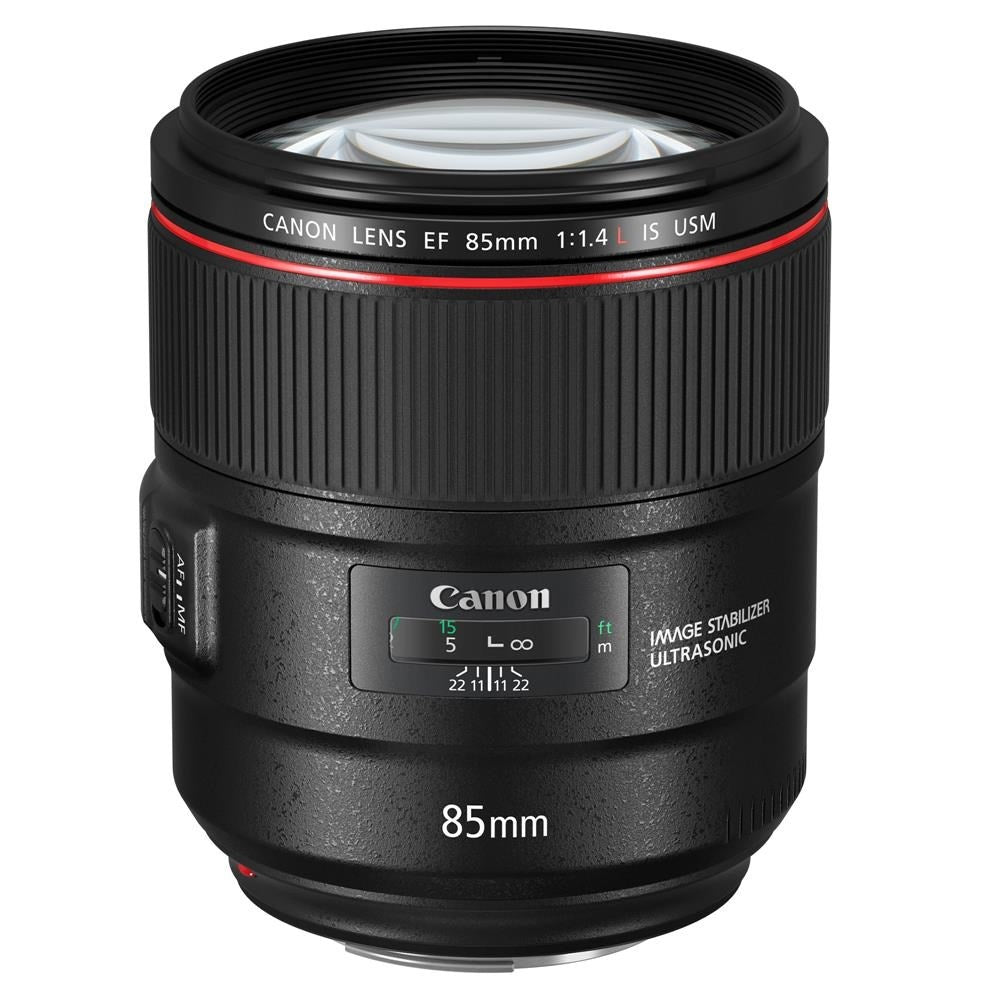Product Description
Canon EF 85mm F1.4L IS USM Lens
The Canon EF 85mm F1.4L IS USM Lens delivers the perfect combination of speed, precision, and image quality, making it a top choice for professional photographers. Its versatile short telephoto focal length and large f/1.4 aperture are ideal for portraits, weddings, and low-light photography, while advanced stabilization and durable construction make it a reliable tool for any scenario.
Key Features
Exceptional Portrait Photography
- The 85mm focal length provides a flattering perspective for portraits.
- A wide f/1.4 aperture creates a beautifully shallow depth of field, making subjects stand out against creamy, soft backgrounds.
Advanced Image Stabilization
- Up to 4 stops of Image Stabilization (IS) for sharp, blur-free images, even in low-light or handheld shooting.
- Ideal for indoor sports, events, and on-the-go photography without a tripod.
Superior Optical Performance
- 14 elements in 10 groups for outstanding sharpness and minimal chromatic aberration.
- Canon’s Air Sphere Coating (ASC) reduces flare and ghosting, enhancing contrast and image clarity.
Professional Build and Features
- 9-blade circular aperture for stunning, smooth bokeh.
- Full-time manual focus override for precision adjustments without switching modes.
- Ring-type USM autofocus motor delivers fast, accurate, and near-silent focusing.
Durable Construction for Any Environment
- Weather-sealed to protect against dust and moisture.
- Fluorine coating on the front and rear elements repels water and oil, ensuring easy cleaning.
- Built to endure rigorous professional use, whether in the studio or outdoors.
Specifications
- Focal Length: 85mm
- Maximum Aperture: f/1.4
- Lens Construction: 14 elements in 10 groups
- Image Stabilization: Yes (4 stops)
- Angle of View: 28° 30'
- Minimum Focus Distance: 0.85m
- Maximum Magnification: 0.12x
- Aperture Blades: 9 (circular)
- Filter Size: 77mm
- Dimensions: Approx. 88.6mm x 105.4mm
- Weight: Approx. 950g
What's in the Box
- Canon EF 85mm F1.4L IS USM Lens
- Lens Cap (E-77 II)
- Lens Hood (ET-83E)
- Lens Case (LP1219)
- Rear Lens Cap
Ideal For
- Portrait Photography: Capture flattering portraits with smooth, artistic background blur.
- Event Photography: Fast aperture and IS ensure sharp shots even in dimly lit venues.
- Low-Light Scenarios: Exceptional performance without the need for additional lighting.
- Creative Shooting: Add depth and dimension to compositions with exceptional bokeh and sharpness.
The Canon EF 85mm F1.4L IS USM Lens is a must-have for professionals and enthusiasts seeking stunning image quality, fast performance, and durable construction. It excels in creating beautiful portraits and capturing special moments in all conditions.
For full specifications click Here
Try The Kit - Canon Test Drive

Canon Test Drive – Try Before You Buy with Free Next Day Delivery
Test selected Canon gear with a 48-hour free trial or hire for up to 7 days at a low cost. Book anytime via the 24/7 live system.
How it works:
-
Book your kit – Choose dates and reserve online.
-
Pay a refundable deposit – Fully refunded upon safe return.
-
Fast delivery – Get your gear quickly and securely.
-
Easy returns – Use pre-paid packaging for simple drop-off or collection.
Visit https://testdrive.trythekit.com to book yours now.
Payment & Security
Your payment information is processed securely. We do not store credit card details nor have access to your credit card information.


















